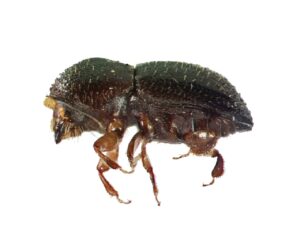If you want to start a fight on a Facebook neighbourhood page, or you want to cause friends to bicker on your personal profile, bring up the much-maligned stat that Cape Town is experiencing its worst drought in more than 100 years.
The Day Zero blame game isn’t going away, and with the realisation that we’re soon to be queuing for water comes anger.
For those looking to blame the government, both provincial and national, such a stat is problematic. If we are caught in the midst of a freakish drought, then it’s somewhat harder to say that the main cause of this mess is political incompetence.
Only somewhat, because I think it’s clear that balls have been dropped along the way.
How about some cold, hard statistics then? Piotr Wolski, a water scientist at UCT, has used the latest rainfall and best available weather station data to compare our current drought to past ones, and published the results on GroundUp.
Now the findings are extensive, and full of graphs and stats that are tough to summarise, but here is some of what stands out:
It appears that nine stations have data available for recent years, but four are located in the region of the WCWSS [Western Cape Water Supply System] dams, and have no significant gaps or systematic errors from 1981 through 2017. Those stations are: Vogel Vallij, Zacharashoek, Theewaterskloof and Kogel Baai.
This is annual rainfall at these stations for 1981 to 2017, measured from November through to October:

Then there’s this:
To make further analyses more robust, instead of analysing data from individual stations, I calculated their simple average. And to account for the fact that the drought is likely of a multi-year character, I created plots showing two-, three- and four-year average rainfall:

These plots tell a consistent story: 2017, as well as the preceding two-, three- and four-year average rainfall in the region are the lowest since 1981. What it means is that the 2017 drought was at least as rare as once in 36 years.
OK, so we can start with it being the worst drought in the past 36 years, but Wolski isn’t done.
You’ll find the methodology on how the following stats are calculated on GroundUp here, but I’m going to jump straight to the conclusion:
So the long-term SAWS data from the WCWSS dams region shows that 2017 and the period 2015 to 2017 were the driest since 1933. This translates into a drought return period of once in 84 years, possibly rarer. But how rare exactly?…My findings are that this kind of drought occurs once in 311 years with a 90% confidence that it falls between 105 and 1,280 years…
The drought, as manifested by rainfall in the region of WCWSS dams, is indeed very rare, and very severe. Importantly, the analyses reveal that the drought was likely less severe in the coastal plains and in Cape Town itself…

In summary – the analyses presented above, based on the best rainfall data available at this time, show that the drought, manifested through low rainfall in 2015 to 2017, was very rare and severe.
Make of that what you will, but I’m pretty sure Dr Wolski, a researcher with UCT’s Climate System Analysis Group, has more information at his disposal than the ranter on your neighbourhood’s Facebook group.
Another day closer to Day Zero, though, so you can bet rationale and reason won’t be the order of the day.
Read Dr Wolski’s full piece here, and keep up to speed with the City’s Day Zero site here.
[source:groundup]





